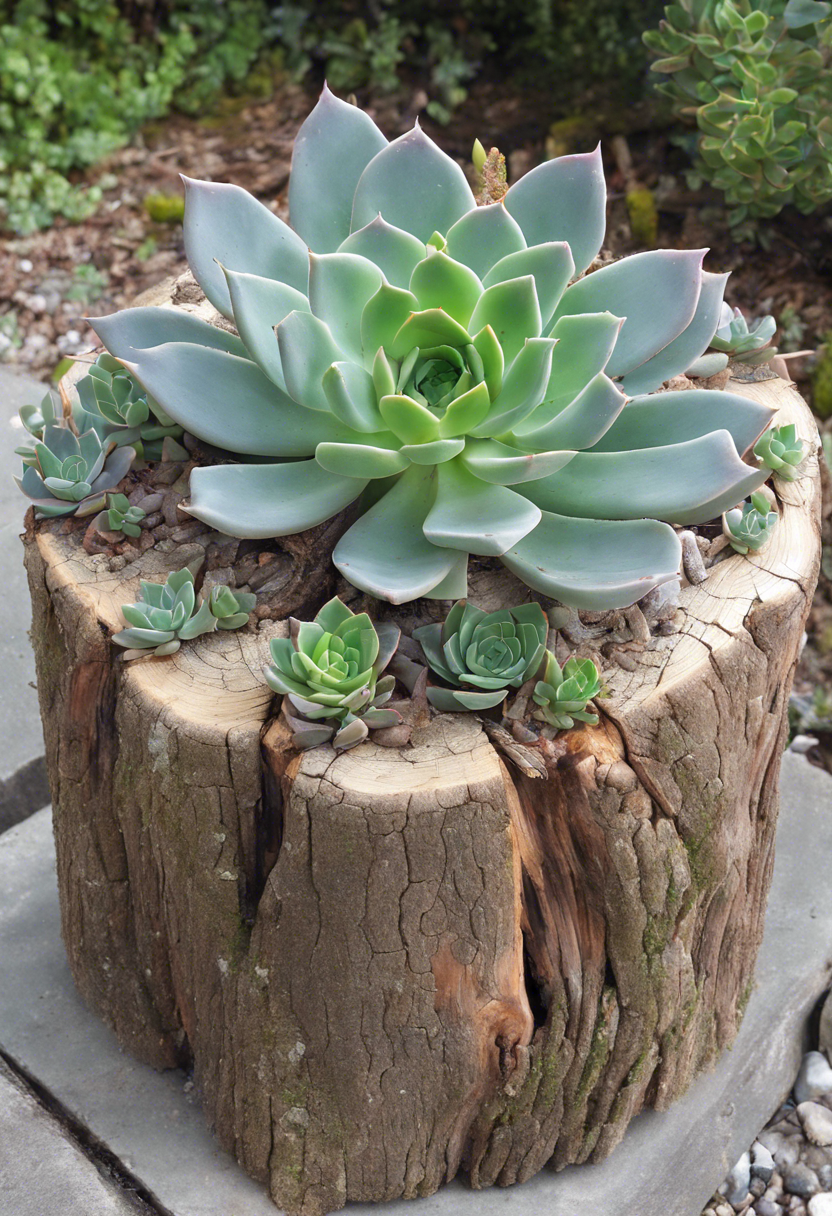
Succulent tree stumps are an intriguing and visually appealing way to incorporate succulents into your home or garden decor. These unique creations combine the natural beauty of a tree stump with the vibrant colors and textures of succulent plants. In this article, we will explore the various aspects of succulent tree stumps, including their creation, care, and the benefits they offer.
Creation
Succulent tree stumps are typically created by repurposing old tree stumps that have been cut down or fallen naturally. The first step in creating a succulent tree stump is to hollow out the center of the stump, creating a cavity where the succulents will be planted. This can be done using tools such as chisels or drills. It is important to ensure that the cavity is deep enough to accommodate the succulent roots and provide adequate space for growth.
Once the stump is hollowed out, it is time to select and plant the succulents. A variety of succulent species can be used, ranging from small rosette-shaped plants to trailing varieties. It is recommended to choose a mix of different succulents to create an interesting and visually appealing arrangement. The succulents should be planted securely in the cavity, using a well-draining soil mix specifically formulated for succulents.
Care
Succulent tree stumps require minimal care once they are established. Here are some important care tips to keep in mind:
1. Watering: Succulents are known for their water storage capabilities, so it is important to avoid overwatering the tree stump. Allow the soil to dry out between waterings and water sparingly, especially during cooler months when succulents enter a dormant phase.
2. Sunlight: Succulents thrive in bright, indirect sunlight. Place the succulent tree stump in a location where it can receive ample sunlight throughout the day. However, be cautious of intense, direct sunlight, as it may cause sunburn and damage the plants.
3. Temperature: Succulents prefer warmer temperatures, ideally between 60-80°F (15-27°C). Protect the tree stump from frost and extreme temperature fluctuations, as succulents are sensitive to cold temperatures.
4. Fertilization: Succulents generally do not require frequent fertilization. However, you can use a diluted, balanced succulent fertilizer once or twice a year during the growing season to provide essential nutrients.
Benefits
Succulent tree stumps offer several benefits that make them a popular choice among succulent enthusiasts:
1. Unique and Decorative: Succulent tree stumps add a unique and decorative element to any indoor or outdoor space. The combination of the natural texture of the stump and the vibrant colors of the succulents creates a visually appealing focal point.
2. Low Maintenance: Succulents are known for their low maintenance requirements, making them ideal for busy individuals or those with limited gardening experience. Succulent tree stumps require minimal watering and can withstand periods of neglect.
3. Drought Tolerance: Succulents are adapted to arid environments and have excellent drought tolerance. This makes them a sustainable choice for regions with limited water resources.
4. Versatility: Succulent tree stumps can be customized to suit your personal style and preferences. You can choose different succulent varieties, arrange them in unique patterns, or even add decorative elements such as rocks or moss to enhance the overall aesthetic.
In conclusion, succulent tree stumps offer a creative and visually appealing way to incorporate succulents into your home or garden decor. With proper care and maintenance, these unique creations can thrive and add a touch of natural beauty to any space. Consider creating your own succulent tree stump and enjoy the beauty and benefits it brings.